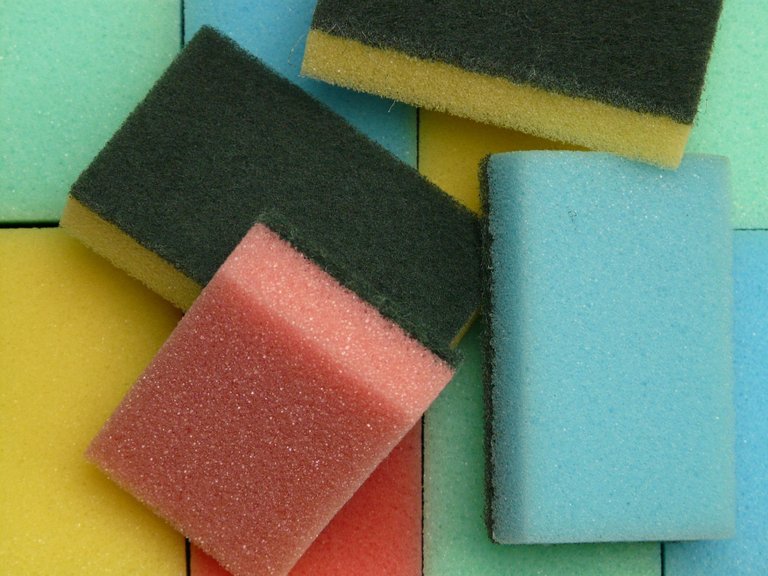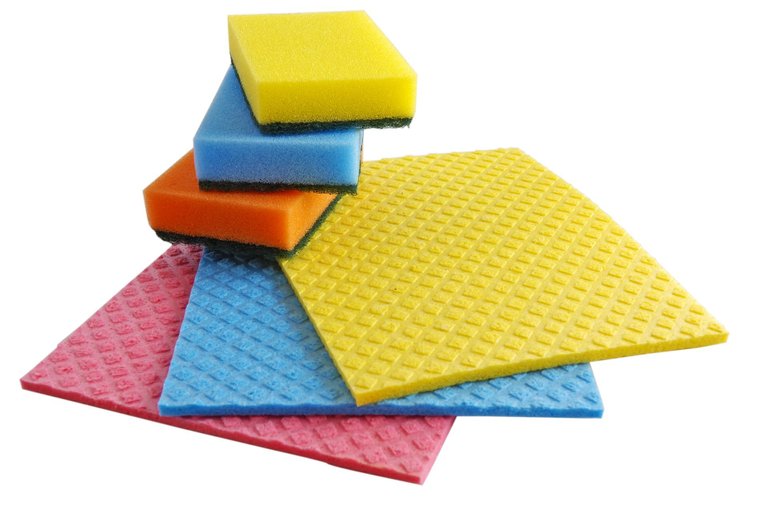Hello to everyone and in particular to those friends who are passionate about plants and gardening.
Today I’d like to tell you about a material that can be very useful in plant cultivation and that I discovered thanks to a Youtuber: the foam rubber! I didn't think I would be so enthusiast with a material that is so easy to find and, for this reason, I would like more people to know this fantastic trick. Obviously, however, it is not suitable for all botanical types, so let's start with the explanation!
A lot of creative growers who are attentive to the needs of their plants look for alternative materials for cultivation, such as:
- Materials used to replace the substrate in place of the soil, such as coconut fiber;
- Materials to be placed on the bottom of the pots for aesthetic or water drainage reasons, such as expanded clay.
Foam rubber is a material that can be used on the bottom of vases, as it has two very important characteristics. First of all, it is able to retain large amounts of water as it expands considerably when wet. In addition, it is immortalized, that is, inert and unsuitable for the proliferation of bacteria and fungi.
But why should I use foam rubber instead of expanded clay, gravel or perlite at the bottom of the pots? It depends on which plant is in the pot!
In fact, if we grow succulent plants, a very loose soil and a draining material on the bottom of the pot, such as gravel, is ideal not only to avoid stagnation but also to increase the weight of the pot which otherwise, given the scarce irrigation to be practiced on the Cactaceae, it could fly away due to the wind.
If, on the other hand, we want to grow marsh plants or carnivorous plants such as Dioneae or Sarracenie, we really need a material that retains as much water as possible and that is immolder, such as foam rubber. The latter type of plants, always needing water stagnation at the root level, cannot stay in a substrate that rots easily in contact with water because we must avoid the proliferation of pathogens.

Photo by Hans Braxmeier from Pixabay
The foam rubber can be purchased on the market cut into thin strips that are used for padding for domestic use. It is therefore a very cheap and easily available material.
For marsh plants, the jar can be filled with 30% foam rubber. For carnivorous plants, given the reduced root system, you can also opt for a 50% with a truly remarkable saving of peat.
Other advantages of foam rubber are the fact that it is reusable: just wash it in hot water, without using soap, and it will be ready for a new use. Furthermore, it is able to give freshness to the plant because it remains moist even when there is no more water in the saucer and it is difficult to dehydrate.
This revolutionary material is also perfect for those who grow bonsai and orchids: think that the sphagnum (which I talked about in the previous post) can be safely grown in a terrarium with a jar filled with foam rubber and with 1-2 cm of water in the saucer.
For which plants, on the other hand, is foam rubber not recommended? For all those plants that do not like water stagnation, house plants or plants with a large root system (such as roses and philodendrons).
I hope this post was interesting and I invite you to try this amazing material. Thanks for reading! See you next time,
Delilha

ITA
Ciao a tutti e in particolare agli amici appassionati di piante e giardinaggio.
Oggi vi voglio parlare di un materiale che può essere molto utile nella coltivazione delle piante e che ho scoperto grazie a uno Youtuber: il gommapiuma! Non pensavo che mi sarei trovata così bene con un materiale di così facile reperibilità e, per questo motivo, vorrei che più persone conoscessero questo fantastico trucco. Ovviamente, però, non è idoneo per tutte le tipologie botaniche, quindi iniziamo subito con la spiegazione!
Spesso i coltivatori creativi e attenti alle esigenze delle proprie piante cercano dei materiali alternativi per la coltivazione, come per esempio:
- Materiali usati per sostituire il substrato al posto del terriccio, come la fibra di cocco;
- Materiali da porre sul fondo dei vasi per motivi estetici o di drenaggio dell’acqua, come l’argilla espansa.
Il gommapiuma è un materiale che può essere utilizzato sul fondo dei vasi, poiché presenta due caratteristiche importantissime. Innanzitutto, è in grado di trattenere grandi quantità d’acqua in quanto si espande notevolmente quando è bagnato. Inoltre, è immarcescibile, ovvero inerte e inadatto alla proliferazione di batteri e funghi.
Ma perché dovrei usare il gommapiuma al posto della argilla espansa, della ghiaia o della perlite nella parte bassa dei vasi? Dipende da quale pianta sta nel vaso!
Infatti, se coltiviamo piante grasse, un terreno molto sciolto e un materiale drenante sul fondo del vaso, come la ghiaia, è l’ideale non solo per evitare ristagni ma anche per aumentare il peso del vaso che altrimenti, vista la scarsa irrigazione da praticare sulle Cactaceae, potrebbe volare via per colpa del vento.
Se, invece, vogliamo coltivare piante palustri o piante carnivore come Dioneae o Sarracenie, ci serve proprio un materiale che trattenga più acqua possibile e che sia immarcescibile, come il gommapiuma. Quest’ultima tipologia di piante, avendo sempre bisogno di ristagno idrico a livello radicale, non può stare in un substrato che marcisca con facilità a contatto con l’acqua perché dobbiamo evitare la proliferazione di agenti patogeni.

Foto di Hans Braxmeier da Pixabay
Il gommapiuma è acquistabile in commercio tagliato a listarelle sottili che vengono impiegate per le imbottiture ad uso domestico. Si tratta, quindi, di un materiale davvero molto economico e facilmente reperibile.
Per le piante palustri si può riempire il vasetto con gommapiuma per un 30%. Per le piante carnivore, visto il ridotto apparato radicale, si può optare anche per un 50% con un risparmio di torba davvero notevole.
Altri pregi del gommapiuma sono il fatto che è riutilizzabile: basterà lavarlo in acqua calda, senza usare il sapone, e sarà pronto per un nuovo utilizzo. Inoltre, è in grado di donare freschezza alla pianta perché si mantiene umido anche quando nel sottovaso non è più presente acqua e difficilmente si disidrata.
Questo materiale rivoluzionario è perfetto anche per chi coltiva bonsai e orchidee: pensate che lo sfagno (di cui ho parlato nel precedente post) può essere tranquillamente coltivato in terrario con un vasetto riempito di gommapiuma e con 1-2 cm di acqua nel sottovaso.
Per quali piante è, invece, sconsigliato il gommapiuma? Per tutte quelle piante che non gradiscono ristagno idrico, piante da appartamento o con un grosso apparato radicale (come rose e filodendri).
Spero che questo post sia stato interessante e vi invito a provare questo straordinario materiale. Grazie per aver letto! Alla prossima,
Delilha







I'm not a gardener but I think this will help them a lot.
Thank you for sharing dear.
Thank you very much! I always try to do my best :) :)
You're doing so much dear, I hope you keep up the good work dear.
Congratulations, your post has been added to Pinmapple! 🎉🥳🍍
Did you know you have your own profile map?
And every post has their own map too!
Want to have your post on the map too?
Your content has been voted as a part of Encouragement program. Keep up the good work!
Use Ecency daily to boost your growth on platform!
Support Ecency
Vote for new Proposal
Delegate HP and earn more
Thank you guys :)